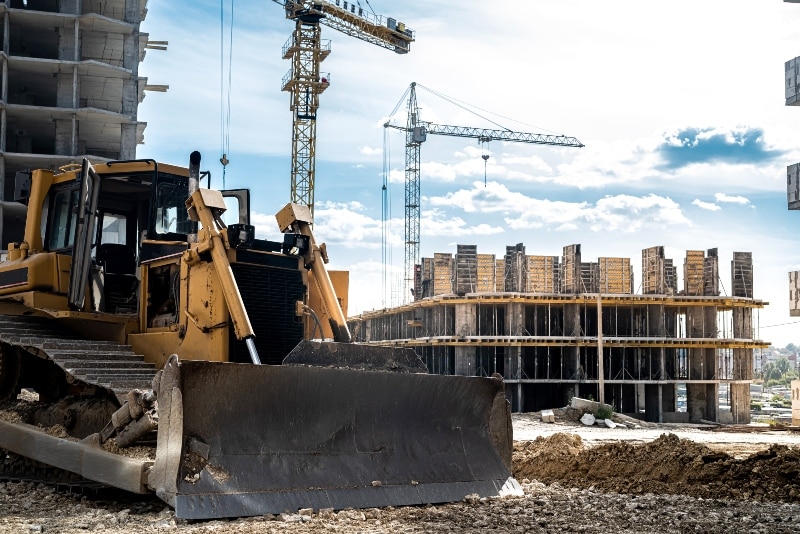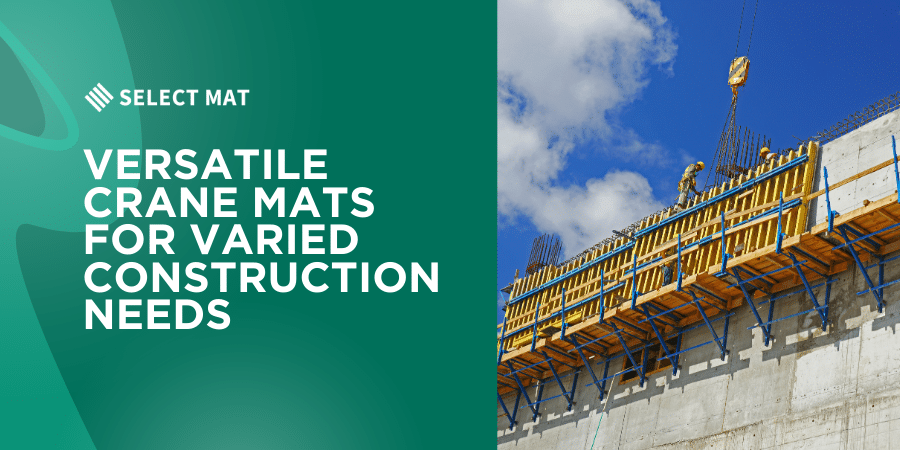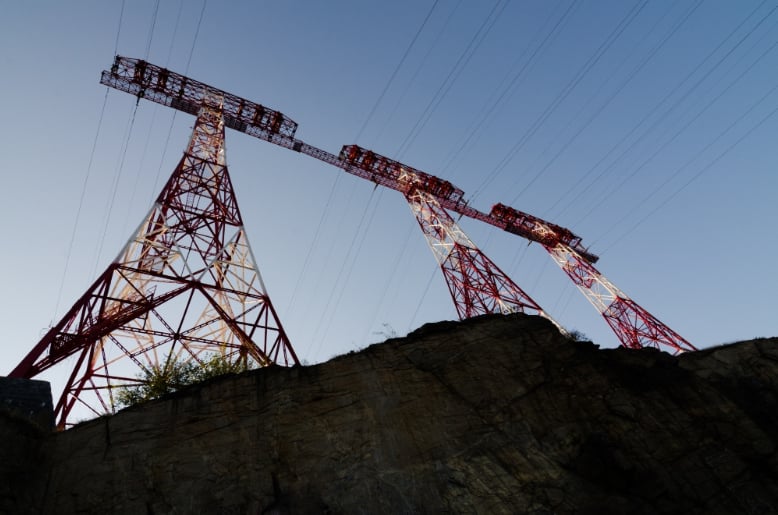Navigating the diverse and often challenging terrains encountered in pipeline and power transmission & distribution (T&D) projects can be a daunting task. Construction contractors, project managers, site supervisors, and equipment rental officers in these industries understand that the success of any project depends on the infrastructure’s adaptability to the environment it operates within. Composite mats have emerged as a versatile solution, offering unparalleled flexibility and performance over demanding landscapes.
Let’s explore the advantages of using composite mats for terrain challenges, highlighting how they cater specifically to the needs of rental customers in the construction industry.
Recognizing Terrain Challenges in Construction
Variability and Complexity
Construction projects, especially within pipeline and T&D sectors, frequently encounter:
- Muddy and Wet Conditions: Post-rainfall or near waterways, terrains can become slippery, posing substantial risks for machinery movement and worker safety.
- Uneven and Rocky Grounds: Irregular surfaces can hinder project operations and damage equipment if not adequately managed.
- Sensitive Ecosystems: Protecting delicate environments while maintaining project momentum is crucial to avoid long-term ecological damage and associated regulatory fines.
Operational Difficulties
The challenges posed by varied terrains include:
- Delays in Project Timelines: Difficult terrain can lead to unanticipated stoppages, pushing deadlines and increasing costs.
- Increased Equipment Wear: Harsh conditions often accelerate wear and tear on construction machinery, necessitating costly repairs and replacements.
- Safety Concerns: Ensuring the safety of personnel in challenging environments is paramount, demanding reliable matting solutions that provide stability and protection.
The Role of Composite Mats in Terrain Adaptation
Why Choose Composite Mats?
Composite mats are designed to deliver robust support and adaptability:
- Superior Strength and Durability: Constructed from high-performance synthetic materials, composite mats offer excellent load distribution and resistance to extreme weather conditions.
- Lightweight and Portable: Despite their strength, they are easier to transport and install compared to traditional timber mats or steel plates, enhancing operational efficiency.
- Environmental Friendliness: As they can be made from recycled materials and are themselves recyclable, composite mats address environmental concerns and promote sustainability.
Addressing Specific Terrain Challenges with Composite Mats
Navigating the varying landscapes that define pipeline and T&D projects requires innovative solutions that cater to specific terrain challenges. Composite mats have surfaced as a preferred choice due to their remarkable adaptability and robustness, effectively addressing common terrain difficulties faced by construction professionals.
Navigating Muddy and Wet Conditions
Construction during or following periods of rain presents unique challenges. Muddy and wet conditions can quickly transform into a construction site’s nightmare, with machinery at risk of getting bogged down, leading to delays and mounting costs.
- Stable Platforms in Unstable Terrain: Composite mats provide a stable and secure foundation that prevents machinery from sinking into the mud. Because of their ability to interlock and their inherent rigidity, disperses the weight of heavy machinery evenly across a broad surface area, ensuring that operations continue unhindered, even in the wettest conditions.
- Safety Features That Reduce Risks: With a focus on safety, the interlocking design of composite mats incorporates non-slip surfaces that significantly diminish the risk of slips and falls. Whether it is machinery operators maneuvering massive equipment or personnel navigating the site, these mats ensure a safer working environment, reducing the potential for accidents.
- Maintaining Project Momentum: By facilitating the smooth movement of equipment over challenging wet areas, composite mats help maintain the continuity of project timelines. There is a significant reduction in downtime normally associated with rain delays, which is vital for keeping projects on track and within budget.
Tackling Uneven and Rocky Grounds
When deploying projects over uneven or rocky terrain, ensuring operational efficacy becomes challenging. Conventional solutions can struggle with these irregularities, often necessitating additional groundwork or earth-moving efforts, which can be costly and ecologically disruptive.
- Contour Adaptability for Seamless Operation: Composite mats boast an impressive flexibility that allows them to adapt to the undulating and rocky landscapes. By naturally contouring to these uneven surfaces, they provide a flattened, continuous surface ideal for the movement of heavy machinery.
- Equipment Movement Efficiency: This adaptability facilitates not just safer but smoother movement for equipment, minimizing mechanical wear and conserving fuel, which in turn contributes to long-term operational savings.
- Protecting Underlying Surfaces: The use of interlocking composite mats also ensures that pressure from equipment is evenly distributed, minimizing the risk of damage to the natural terrain. Timber mats cannot make this claim as they often compress the underlying terrain. Load distribution is crucial for preserving the integrity of the ground surface, helping to avoid erosion and other long-term ecological impacts, such as root compaction.
Preserving Sensitive Ecosystems
A commitment to protecting the natural environment is an integral part of modern construction projects, especially when it comes to working in sensitive or protected areas. Composite mats play a critical role in harmonizing construction objectives with environmental stewardship.
- Weight Distribution Minimizes Soil Compaction: By evenly distributing the weight of machinery, composite mats prevent soil compaction—a leading cause of root system damage and water drainage issues. This helps maintain the natural order and productivity of local ecosystems.
- Minimizing Flora and Fauna Disruptions: The presence of heavy machinery can disrupt local wildlife and vegetation. Composite mats act as a protective barrier, reducing disturbances and helping to preserve the native flora and fauna.
- Compliance with Environmental Standards: Using composite mats aligns with stringent environmental regulations aimed at minimizing the impact of construction activities. This compliance not only ensures the continuation of the project without delays due to environmental audits but also enhances the firm’s reputation as a responsible, eco-conscious construction entity.
Practical Benefits of Using Composite Mats
Enhanced Operational Efficiency
- Quick Installation and Removal: Composite mats can be rapidly deployed and dismantled, saving time and labor costs. Their interlocking systems ensure a seamless coverage, tailoring layouts to specific site needs without hassle.
- Reduction in Maintenance Expenses: Given their durability and resistance to wear, composite mats require less frequent replacement, significantly cutting down on maintenance costs and logistical challenges.
Safety and Compliance
- Reliable Load-Bearing Capacity: Capable of supporting heavy machinery, composite mats reduce the risk of equipment sinking or becoming unstable, protecting both workers and equipment.
- Regulatory Confidence: Their use aids compliance with environmental and safety regulations, mitigating the risk of regulatory penalties and sanctions.
The Future of Construction with Composite Mats
Innovation and Advances
The field of composite mat technology is continually evolving, driven by innovations that enhance performance and sustainability. Developments in materials science and mat design are paving the way for even lighter and stronger mats with increased environmental benefits.
Sustainable Solutions
Composite mats represent a forward-thinking approach to construction matting. By integrating eco-friendly practices into their design and use, they support broader industry efforts to minimize environmental footprints and promote responsible construction practices.
Conclusion
By choosing composite mats, project managers and site supervisors can successfully navigate the multifaceted challenges posed by various terrains. Composite mats provide a reliable, efficient, and environmentally sensitive solution that addresses the immediate needs of heavy-duty construction while preserving the delicate balance of our natural landscapes.
Composite mats offer an innovative solution, blending strength, adaptability, and environmental consideration into one versatile package. At Select Mat, we are dedicated to providing customers with matting options (timber or composite mats, rental, sales and turn-key service) that not only meet but exceed the demands of modern construction challenges. By embracing composite mats, you prepare your projects for success in any environment, ensuring safety, efficiency, and sustainability throughout.



